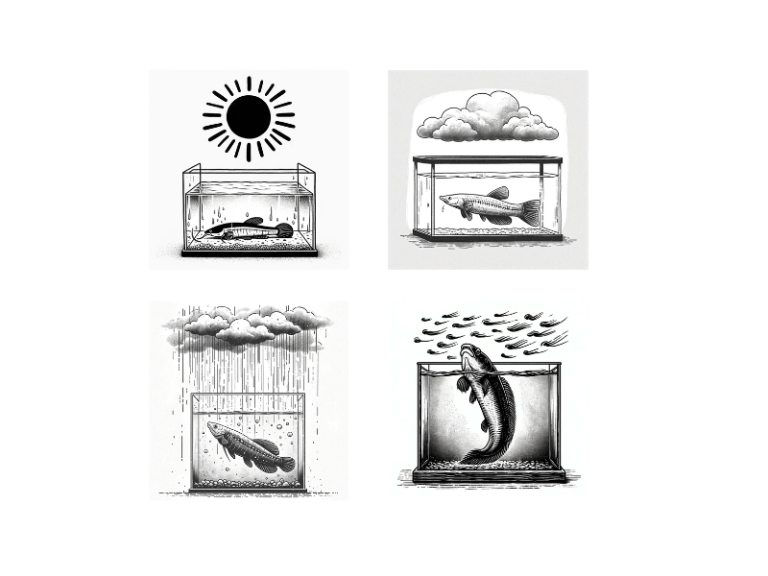“The swallow flies low, the snake crosses the road; soon after, heavy rain will come.”
“The chicken returns home late; rain is on its way.”
These are weather proverbs, the result of long-term observations of weather changes by farmers.
Using the different changes and signs of animals to predict weather changes often achieves a very accurate level.
There are many animals that can predict the weather, such as frogs, ants, earthworms, and some fish, each with different reactions (changes in behavior) to weather changes. Here, I’ll give an example of a mudfish to illustrate how it predicts the weather.
The mudfish can be considered a living barometer. When kept in a glass tank filled with sand and rocks, it relies on the small amount of dissolved oxygen in the water to survive. When the atmospheric pressure is high and the air humidity is low, indicating clear weather, the water contains more dissolved oxygen, and it will stay quietly at the bottom of the tank or burrow into the crevices of rocks without moving. However, as the external environment changes, such as increased humidity and decreased atmospheric pressure, reducing the amount of dissolved oxygen in the tank, it becomes uncomfortable staying at the bottom and will float to the surface, swimming restlessly for a long time or even jumping out of the water, indicating that rain is imminent. When it appears to be motionless or floating on the surface with its head up for a long time, indicating heavy rain is coming; when its body is erect, moving vigorously up and down, with its head occasionally protruding from the water surface to breathe air and quickly releasing gas from its anus, it indicates that a strong wind is coming. Once the weather returns to normal, they also return to their usual state. By observing these sudden physiological changes in mudfish, the changes in weather can often be accurately predicted.

